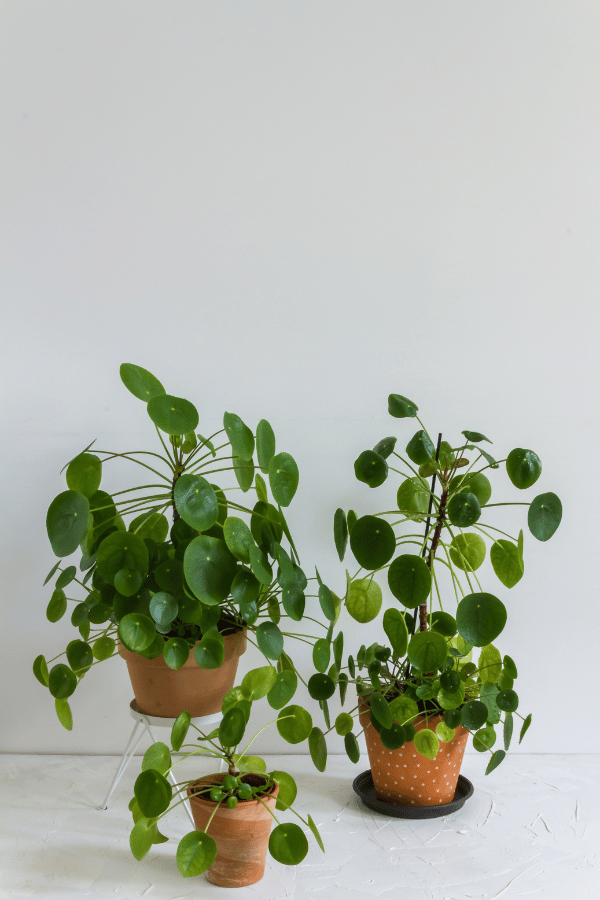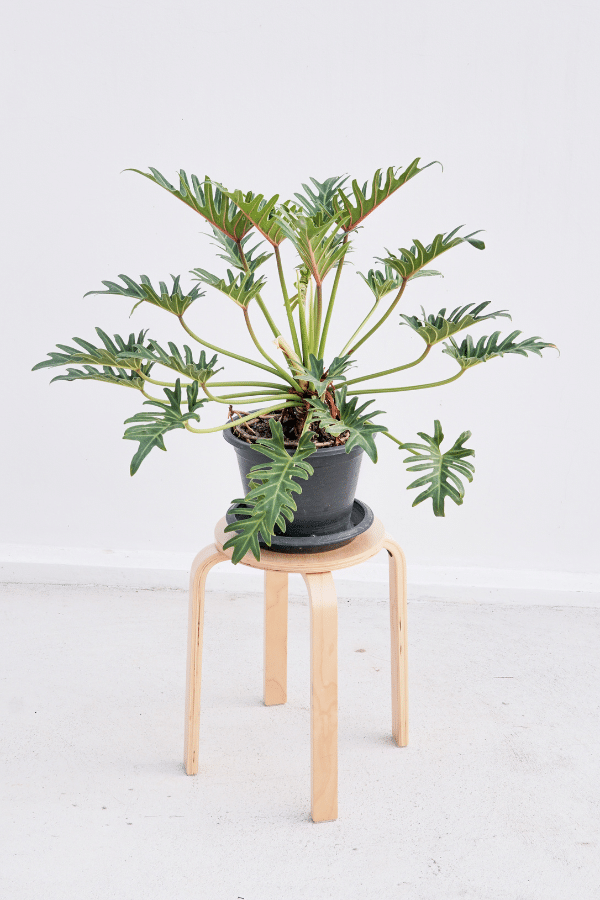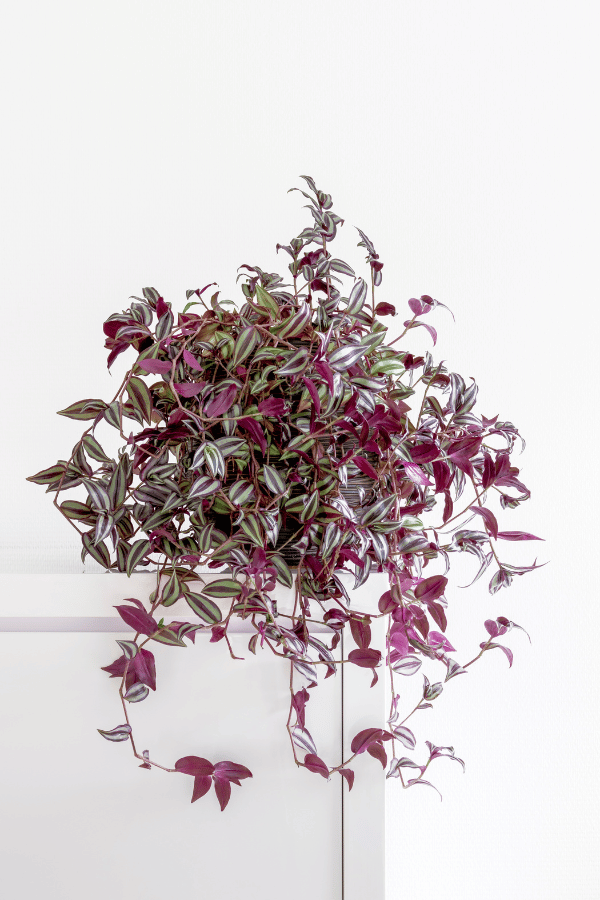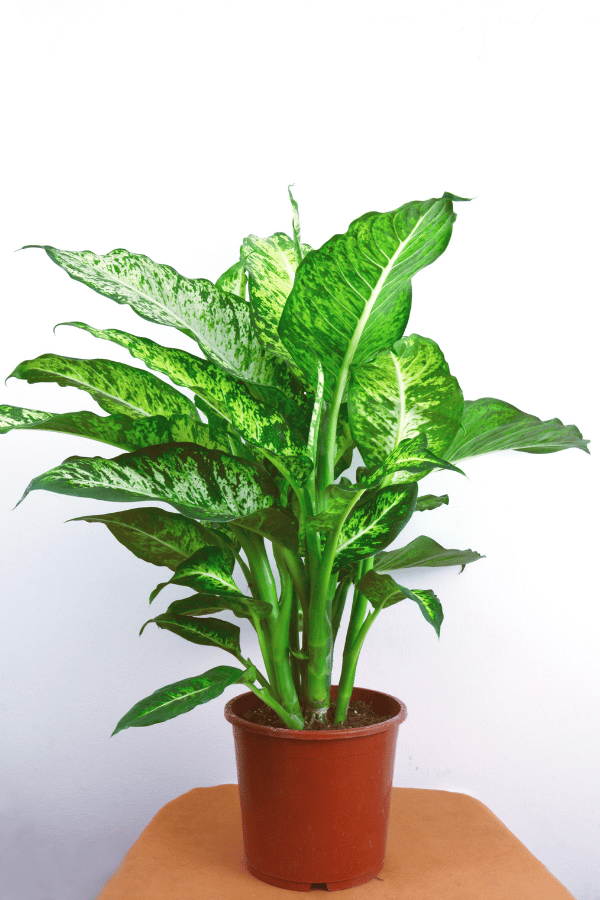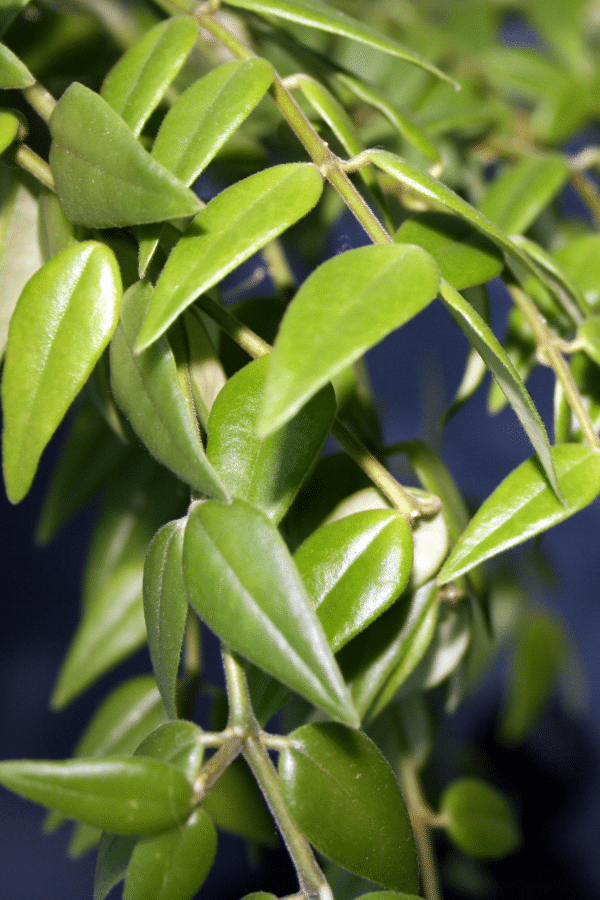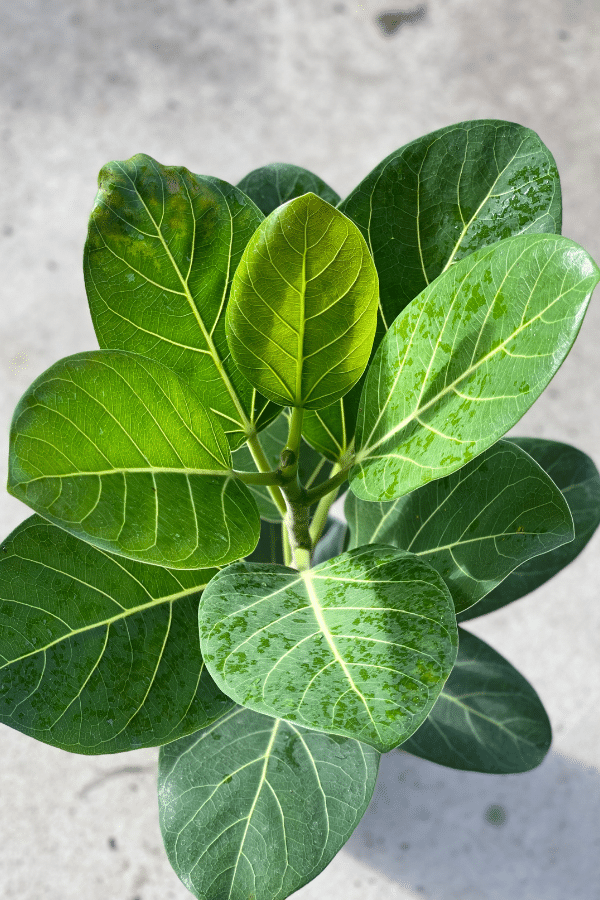Norfolk Island Pine
Scientific Name: Araucaria Heterophylla
Norfolk Island pine, commonly referred to as the Norfolk pine, is an evergreen native to Norfolk Island in the South Pacific. Although it is named a “pine,” it is actually a tropical tree that thrives in various conditions – including indoors.
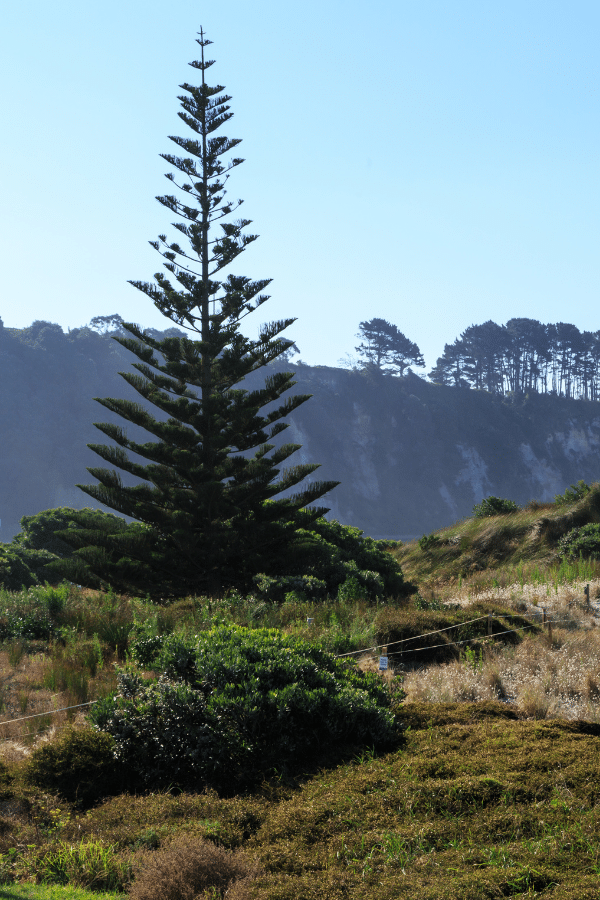
The Norfolk Island pine is a popular choice as a Christmas decoration, which is where it got an informal reference name of “living Christmas trees.” People often decorate these trees during Christmas time with ribbon, ornaments, and ferry lights.
Where the Norfolk Island pine natively grows on Norfolk Island, these trees commonly grow up to a range of 30 to over 100 feet tall. Some even reaching as high as 200 feet tall!
In the United States, the Norfolk Island pine is grown as a landscape tree in the 10 and 11 hardiness zones where sub-tropical climates exist and cold, freezing temperatures are rare.
Indoor, the Norfolk Island pine tends to grow slowly and is very manageable with proper pruning to reach a maximum height of 4 to 8 feet tall.
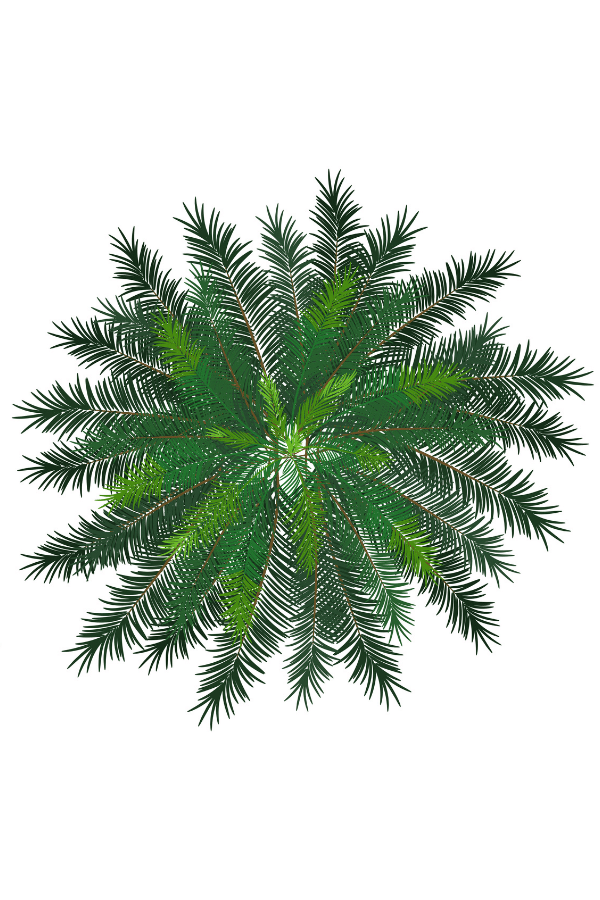
Norfolk Island Pine Identification
The Norfolk Island pine has a very straight trunk and picturesque symmetrical branches. The layers of branches are often spread out letting light in between the branches that are usually curving upward. The branches are covered with short needles that curve inward.
Outdoor, the Norfolk Island pine typically will reach up to 200 feet tall when grown in ideal conditions. Indoor these room refreshing trees grow to be 4 to 8 feet tall, depending on the environment, watering schedule, and amount of sunlight available.
Norfolk Island Pine Growth Facts
Norfolk Island pine trees have different growth requirements depending on if they are grown outdoor as a wild plant or indoor as a house plant.
When growing as an outdoor plant, Norfolk Island pine will require porous, sandy soil that is kept moderately moist with full sun exposure to reach the plant’s true potential. After the tree has established its root system, it can tolerate some high heat and drought conditions, but it is recommended to water it if possible. More on the watering section below.
Indoor as a house plant, use a potting mix that replicates the soil requirements for growing it outdoor with a porous, sandy medium that is slightly an acidic pH. If you buy regular potting soil, add some extra peat moss to the potting mix to increase the acidity, then sand to provide better porosity and drainage. The soil should remain moist, but not saturated. It will need light, even for just an hour or two a day if possible.
Let’s dive more into all of this Norfolk Island pine care information in the next section.

Norfolk Island Pine Care
Norfolk Island Pine Soil
The first and most important item for Norfolk Island pine is soil acidity. Oftentimes these plants will grow poorly or die if the soil acidity is too low. Targeting a pH of 4.5 to 5.5 with the soil is ideal.
Norfolk Island Pine Houseplant Soil
To achieve this soil acidity when growing a Norfolk Island pine houseplant indoors, adding peat moss into standard potting mix or buying a peat moss-based potting mix is the best option. The peat moss will break down over time helping to maintain the soil’s acidity as the peat moss breaks down. Add some sand into the mixture to help with drainage to prevent overwatering.
Repotting the Norfolk Island pine can be tricky due to the roots being delicate, but this will be required after a few years as the plant grows, needing more space for roots and more nutrients.
Norfolk Island Pine Outdoor Soil
The ideal outdoor soil is sandy, rich soil that has not been contaminated with pesticides. When first starting out, adding peat moss into the soil can help young plants grow better since the peat moss will help maintain a higher acidity level.
The Norfolk Island pine can benefit by adding peat moss into the topsoil around the base of the tree, as this will help fertilize the tree.
Norfolk Island Pine Watering
Norfolk Island pines are somewhat drought-tolerant, so they forgiving where water is concerned. It’s advisable to let the soil dry out slightly between waterings. Keep an eye on the needles: if the needles turn yellow, the plant needs more water.
Norfolk Island Pine Sun & Shade
Norfolk Island pines like to have an ample amount of sun – the more sun the better. However, they can also handle long durations without much sun, which makes them the perfect house plants.
When grown as a house plant, the Norfolk Island pine may stretch in low light as they search for sunlight, especially if they are fertilized. If this begins to happen, the best remedy is to move the plant to an area where it can get more sunlight, turning the plant regularly to spread the sunlight to all sides of the plant.
Norfolk Island Pine Temperature & Humidity
The ideal temperature range for Norfolk Island pines is 65 to 70 degrees with high humidity. Although they can handle mild temperature swings, they cannot survive in very extreme temperatures – especially in areas where the temperature drops below freezing.
With the ideal temperature range for the Norfolk Island pine being 65 to 70 degrees, normal indoor house temperatures are usually perfect for them to thrive. The main issue will be the humidity. However, the humidity can be replaced by simply misting the plant with a spray bottle once in a while.
If you forget to spray down the Norfolk Island pine, you really don’t need to worry since they are fairly hardy and can handle dry, tropical temperatures in their natural environment.
Norfolk Island Pine Maintenance & Pruning
When growing a Norfolk Island pine indoors, one of the main maintenance items to attend to is removing any branches that have died. This tends to be the lower branches on indoor plants as the plant grows and those branches get covered.
Although trimming the top of a tree is generally not recommended, for an indoor Norfolk Island pine you may have to top the tree by cutting the center lead branch to prevent it from growing to tall. Topping the center leader will prevent this from continuing to grow, forcing the tree to focus on growing the other existing branches. This will change the appearance of the tree over time as it bushes out more, but it should not impact the health of your Norfolk Island pine.
A Norfolk Island pine growing outdoor does not need any maintenance or pruning, aside for removing dead branches that may naturally occur. Also, to watch for any stress from extreme temperature swings or pests.
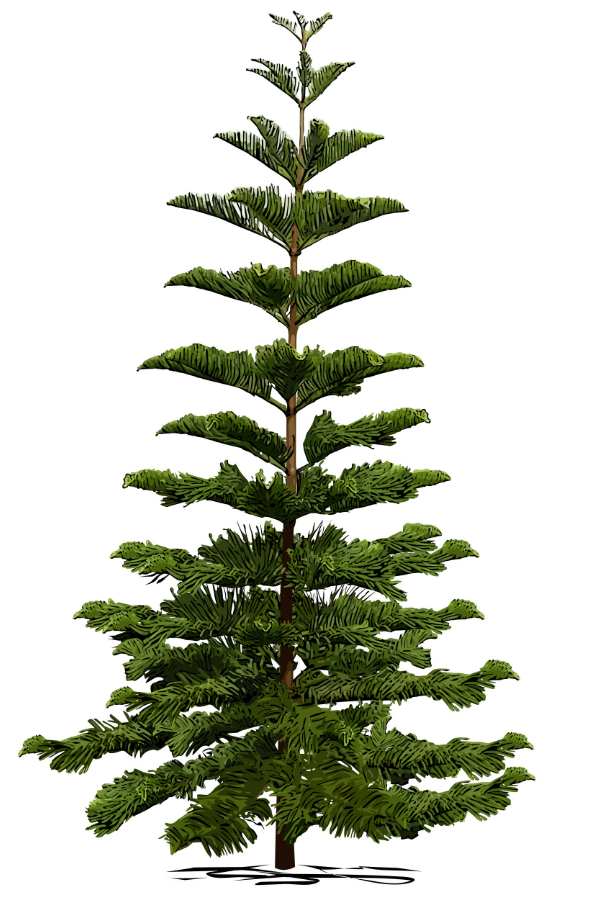
Norfolk Island Pine Toxicity
Norfolk Island pine is toxic to cats if they eat or chew on the needles or drink the water from a pot drainage tray. If a cat does chew or eat the needles from a Norfolk Island pine or drinks the water from the drainage tray, the cat may experience an upset gastrointestinal system and skin irritation.
Norfolk Island Pine Problems
Norfolk Island Pine Diseases
The main “disease” to watch out for with Norfolk Island pines is actually not a disease, rather it is their slow pace of growing strong roots, especially when they are young. This issue is widely known about the Norfolk Island trees, even when grown under ideal conditions in perfect soil. This is the reason this tree has also been called the “suicide tree,” since some of them tend to not do the work possible to not let itself die.
To combat this slow root growth issue, make sure the soil it is planted in has plenty of peat moss, sand, and potentially some vermiculite to make it easier for the roots to crawl. Also, applying a light tree fertilizer solution can help, but make sure you are not over fertilizing or watering it – especially if it is in a low sunlight area.
Norfolk Island Pine Pests
Plant InformeNorfolk Island pines attract aphids, mealybugs, scale, and whitefly. These are all common pests that can be brought in by other plants you purchase at the store, or arrive out of nowhere. It is important to treat the infestation right when you find it with the least toxic remedy.

